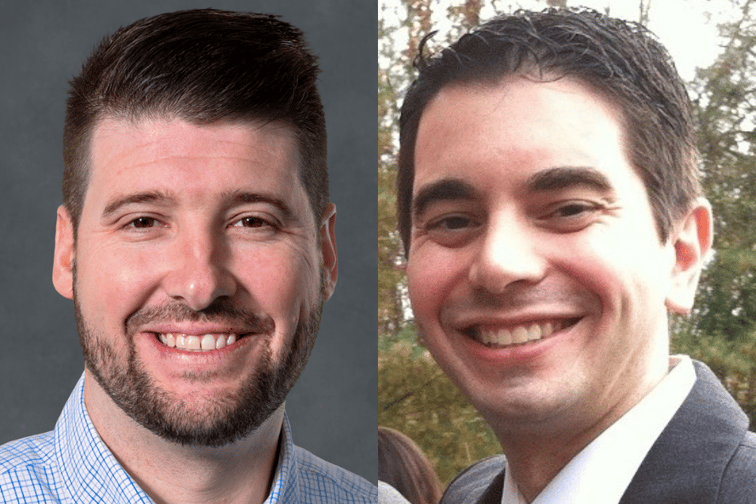

This article was produced in partnership with Amwins.
Gia Snape, of Insurance Business America, sat down with Chris Platania, SVP, head of actuarial services, Amwins Group and Johnny Tolland, EVP, property at Amwins Brokerage in Delray Beach, Florida, to discuss the changes to Moody’s RMS North Atlantic hurricane model and how they could impact the market.
Catastrophic weather events have been a significant contributor to the hardening of the property insurance market over the past few years. But Moody’s newest RMS hurricane model, released in June, could make conditions even more complex, especially for commercial insureds in Florida, Texas, and other states along the Gulf and in the Southeast.
Specialists at Amwins, the nation’s top P&C wholesale broker, forecast that the changes to RMS could drive higher than expected CAT losses in models and cause carriers to shrink their capacity in already-ailing markets.
“The potential impact in the future is heavy to extreme,” said Johnny Tolland (pictured on the left), EVP, property at Amwins Brokerage in Delray Beach, Florida.
RMS version 23 includes updates to existing models for core perils and for climate change views and includes enhancements to geocoding, model flexibility, data framework, security, and more, according to Moody’s.
Insurers and reinsurers will be fully adopting RMS 23 in the next six to 12 months, according to Tolland. Version 23 did not impact midyear renewals, but it’s expected to drive probable maximum losses and deployment of aggregate next year.
“When these rating agencies start to use RMS 23, everybody will follow suit, and the impact will be significant. It will lead to a supply crunch in some ways,” Tolland told Insurance Business.
The most significant changes in RMS involve the medium-term rates for hurricane risk and the vulnerability enhancements to residential and non-residential structures, according to Chris Platania (pictured on the right), SVP and head of actuarial services at Amwins Group.
The medium-term rates refer to Moody’s RMS view of event frequency in the North Atlantic. The approach considers current and projected near-term climate trends to determine hurricane risk.
“Because we’re in a high sea surface temperature, and North Atlantic oscillation is low, there’s more potential for storms to form. Higher, longer storm tracks mean storms can intensify more quickly and stay intense for longer periods of time,” Platania explained.
The updates in vulnerability, on the other hand, stem from Moody’s incorporation of claims data from recent catastrophes.
“After Irma, Michael, and some of the other historical storms we’ve had more recently, they looked at vulnerability for properties like condo HOAs (homeowners associations), some commercial risks such as restaurants, and found those performed much worse than anticipated. Therefore, the vulnerability for those types of structures was increased,” said Platania.
“The changes are also regional in that they’re more impactful in places such as the Gulf region and Florida. A lot of it was caused by wind-driven rain, water intrusion, and other risks causing losses to condos and other buildings.”
Though RMS 23 was officially released in June, insurers and reinsurers have yet to fully adopt the model. It takes the industry roughly nine to 12 months for full adoption.
Tolland doesn’t expect the upcoming January 1 renewals to reflect the impact of RMS 23.
“If anything, we’re in a stage where [reinsurers] are vetting RMS 23 and using iterations in conjunction with RMS 21,” he said.
“I think we will see more changes on 4/1 and 7/1. The hammer will drop when the rating agencies start using RMS 23. I think that’s when a potential supply crunch comes forward if other things align.”
Other factors could mitigate the impact on capacity, such as reforms in Florida’s insurance market set in motion last year.
“Recent legislation passed by the state of Florida has brought some capital back into the marketplace, which will counteract some of these impacts,” Tolland said.
Understanding how primary insurers use catastrophe models such as RMS can help brokers make informed decisions about their clients’ coverage.
Tolland and Platania also underscored the importance of working with a specialist wholesale broker like Amwins to navigate current market conditions and tap into new capacity being brought forward by carriers.
“Amwins has access to creative solutions, which can help bring more stability to the market and our clients year over year,” said Platania.
Tolland emphasized the expertise and value brought by Amwins’ in-house actuarial team, which can provide modeling and education to retail clients on RMS 23 and other catastrophe models used in the industry.
“We have a huge knowledge base to bring to our retailers and build creative solutions,” Tolland said.
“There’s a lot of changes in the insurance marketplace affecting different lines of coverage. That’s why we always stay on top of the changes – to help our clients win.”
